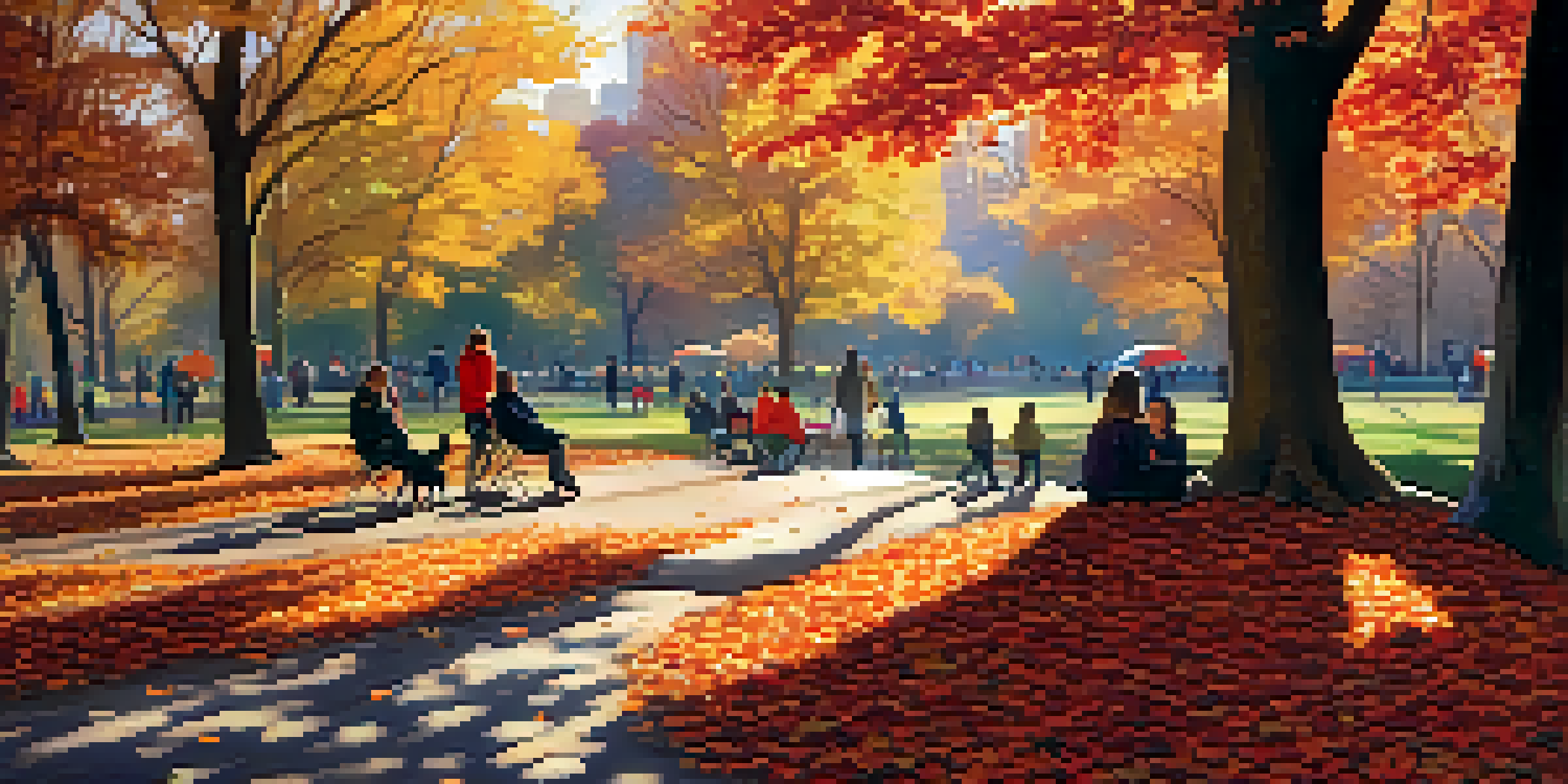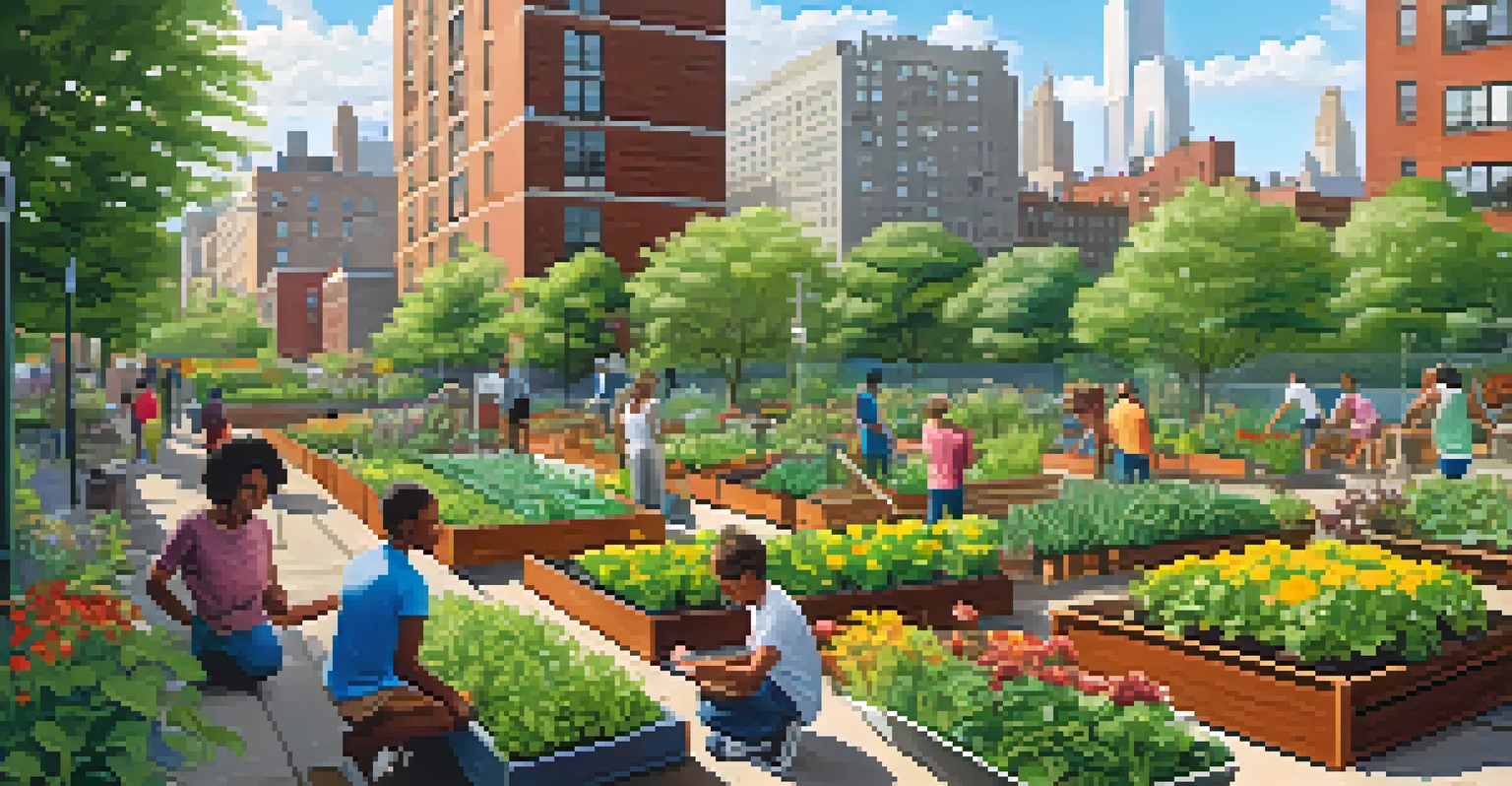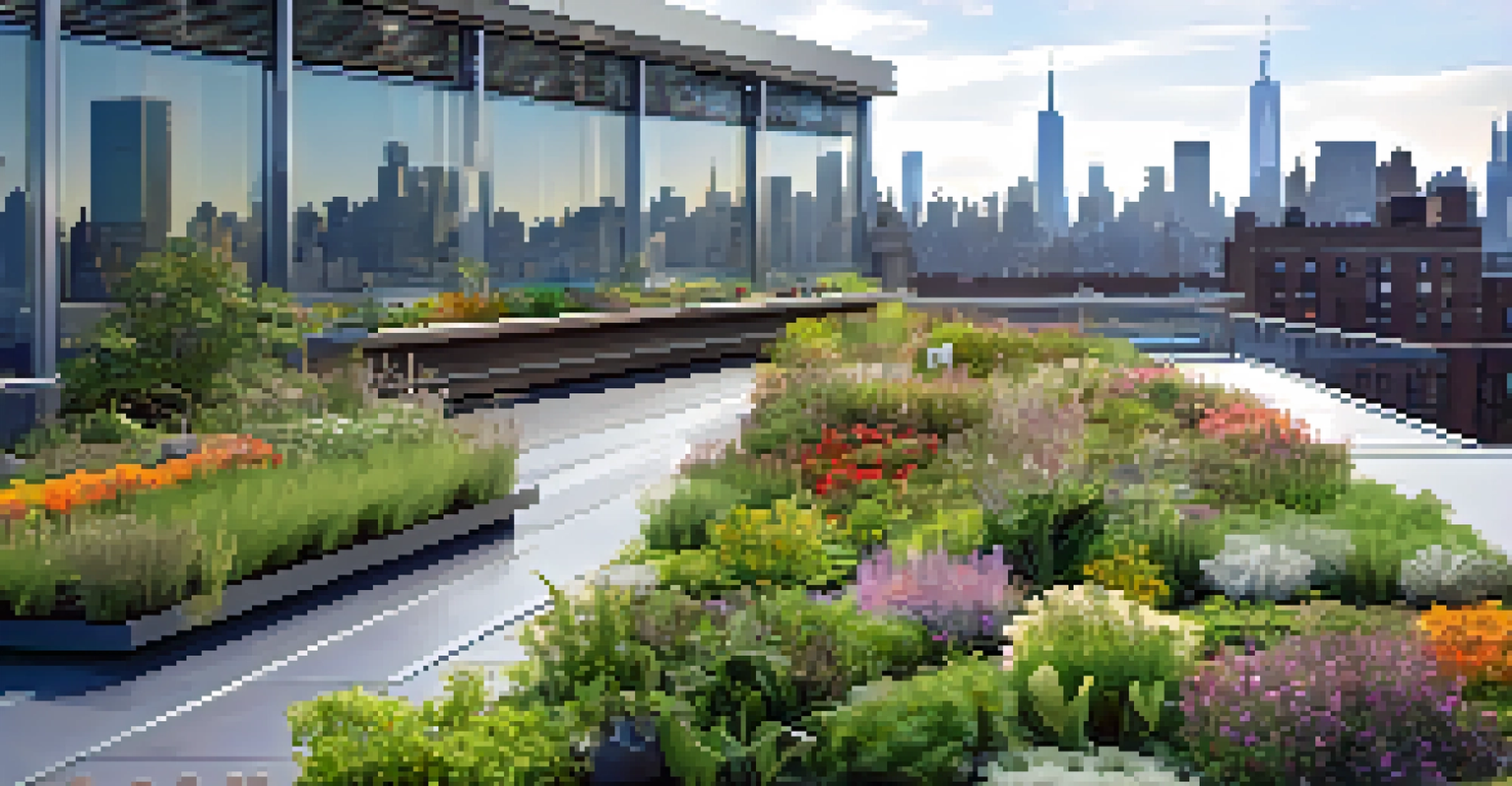The Role of Urban Green Spaces in NYC's Sustainable Future

The Importance of Urban Green Spaces in NYC
Urban green spaces, like Central Park and smaller community gardens, play a crucial role in New York City's ecosystem. They provide essential habitats for wildlife, contributing to biodiversity in an otherwise concrete jungle. Additionally, these spaces offer a vital reprieve for city dwellers, allowing residents to connect with nature amid the bustling urban environment.
The creation of more green spaces in urban areas is not just an environmental necessity; it’s an investment in the health and well-being of the community.
Beyond aesthetics, green spaces contribute significantly to the city’s air quality. Plants absorb carbon dioxide and release oxygen, helping to combat pollution that plagues urban areas. This process not only enhances the health of residents but also contributes to the overall resilience of the city against climate change.
Moreover, urban green spaces are linked to improved mental health and well-being. Studies show that access to parks can reduce stress, enhance mood, and encourage physical activity. This aspect is particularly important in a fast-paced city like NYC, where the hustle and bustle can take a toll on residents' mental wellness.
Green Spaces and Climate Resilience
As climate change continues to pose a significant threat, urban green spaces are key to enhancing NYC's climate resilience. They can mitigate the heat island effect, where urban areas become significantly warmer than their rural counterparts, by providing cooling shade and releasing moisture into the air. This natural cooling mechanism is crucial during hot summer months when heat waves can become unbearable.

Additionally, green spaces play a role in stormwater management. Parks and green roofs can absorb rainwater, reducing runoff and lowering the risk of flooding. This is particularly important in a city prone to heavy rainfall and hurricanes, where effective water management systems are vital to protect infrastructure and communities.
Green Spaces Enhance Urban Life
Urban green spaces in NYC provide essential benefits, including improved air quality, mental health, and biodiversity.
By incorporating more greenery into the urban landscape, NYC can better withstand extreme weather events while promoting a healthier environment. This dual benefit exemplifies how urban planning can align with sustainability goals, creating a more resilient city for future generations.
Social Equity Through Access to Green Spaces
Access to green spaces is not just an environmental issue; it is also a matter of social equity. Many neighborhoods in NYC, particularly those in lower-income areas, lack sufficient green spaces. This disparity can lead to unequal health outcomes, as residents in these areas may miss out on the physical and mental health benefits that parks and gardens provide.
Parks are not just for the privileged; they are essential for the health and well-being of all citizens, providing a necessary respite from urban life.
Efforts to create more inclusive green spaces are essential for fostering community engagement and social cohesion. When people have a shared space to enjoy, it encourages interaction and strengthens community bonds. This sense of belonging is crucial in a diverse city like NYC, where cultural differences can sometimes create barriers.
By prioritizing the development and maintenance of green spaces in underserved neighborhoods, NYC can promote inclusivity and improve the quality of life for all residents. This approach not only addresses environmental justice but also empowers communities to take an active role in shaping their surroundings.
Economic Benefits of Urban Green Spaces
Urban green spaces can significantly boost local economies. Parks and recreational areas attract tourists and residents alike, encouraging spending in nearby businesses such as cafes, shops, and restaurants. This influx of visitors can provide a much-needed economic lift, especially in areas that may struggle to thrive otherwise.
Moreover, properties located near well-maintained green spaces often see increased property values. Homebuyers and renters are typically willing to pay a premium for homes near parks, which can lead to greater tax revenues for the city. This financial benefit can then be reinvested into maintaining and expanding these green areas.
Equity in Access to Green Areas
Ensuring equitable access to green spaces promotes social cohesion and addresses health disparities in underserved neighborhoods.
In essence, investing in urban green spaces is not just an environmental initiative; it's an economic strategy that can yield long-term benefits. By recognizing the economic value of these spaces, NYC can prioritize their development as part of a broader sustainability agenda.
Community Engagement in Green Space Initiatives
Community engagement is vital for the success of urban green space initiatives. Local residents often have the best understanding of what their neighborhoods need, making their input invaluable. By involving community members in the planning and maintenance of these spaces, cities can ensure that the parks serve their intended purposes effectively.
Programs that encourage volunteerism, such as community garden projects or park clean-up days, foster a sense of ownership and pride among residents. When people feel invested in their local green spaces, they are more likely to take care of them and advocate for their improvement. This grassroots involvement not only enhances the spaces themselves but also strengthens community ties.
Furthermore, educational initiatives that promote the importance of green spaces can inspire future generations to appreciate and protect these areas. By teaching children about nature and sustainability, NYC can cultivate a new wave of environmental stewards who will carry on the mission of preserving urban green spaces.
Innovative Green Space Solutions for NYC
As urbanization continues to grow, innovative solutions for integrating green spaces into NYC's landscape are emerging. Concepts like vertical gardens and green roofs are gaining traction, allowing for the introduction of greenery even in densely populated areas. These solutions help maximize limited space while promoting environmental benefits.
Furthermore, the city is exploring the use of 'parklets'—small public spaces created by converting parking spots into mini-parks. These parklets provide valuable green space where people can relax, socialize, and enjoy the outdoors. This creative approach not only enhances urban aesthetics but also encourages sustainable transportation options by promoting walking and biking.
Economic Gains from Green Spaces
Investing in urban green spaces boosts local economies by attracting tourists and increasing property values.
By embracing innovative solutions, NYC can lead the way in transforming urban landscapes into greener, more sustainable environments. These efforts will not only improve the quality of life for residents but also set an example for cities around the world facing similar challenges.
The Future of Urban Green Spaces in NYC
Looking ahead, the future of urban green spaces in NYC appears promising yet challenging. As the city continues to grow, balancing development with the preservation and expansion of green areas will be crucial. Stakeholders, including city planners, community members, and environmentalists, must work collaboratively to ensure that green spaces remain a priority.
Technological advancements can also play a role in shaping the future of urban greenery. Tools like GIS (Geographic Information Systems) can assist in identifying areas lacking access to green spaces, helping to inform effective planning strategies. By utilizing data-driven approaches, NYC can make informed decisions that enhance both the quantity and quality of its green spaces.

Ultimately, the vision for NYC's sustainable future depends on its commitment to nurturing urban green spaces. As these areas continue to evolve and adapt to the needs of residents, they will undoubtedly remain a cornerstone of the city’s environmental and social fabric.